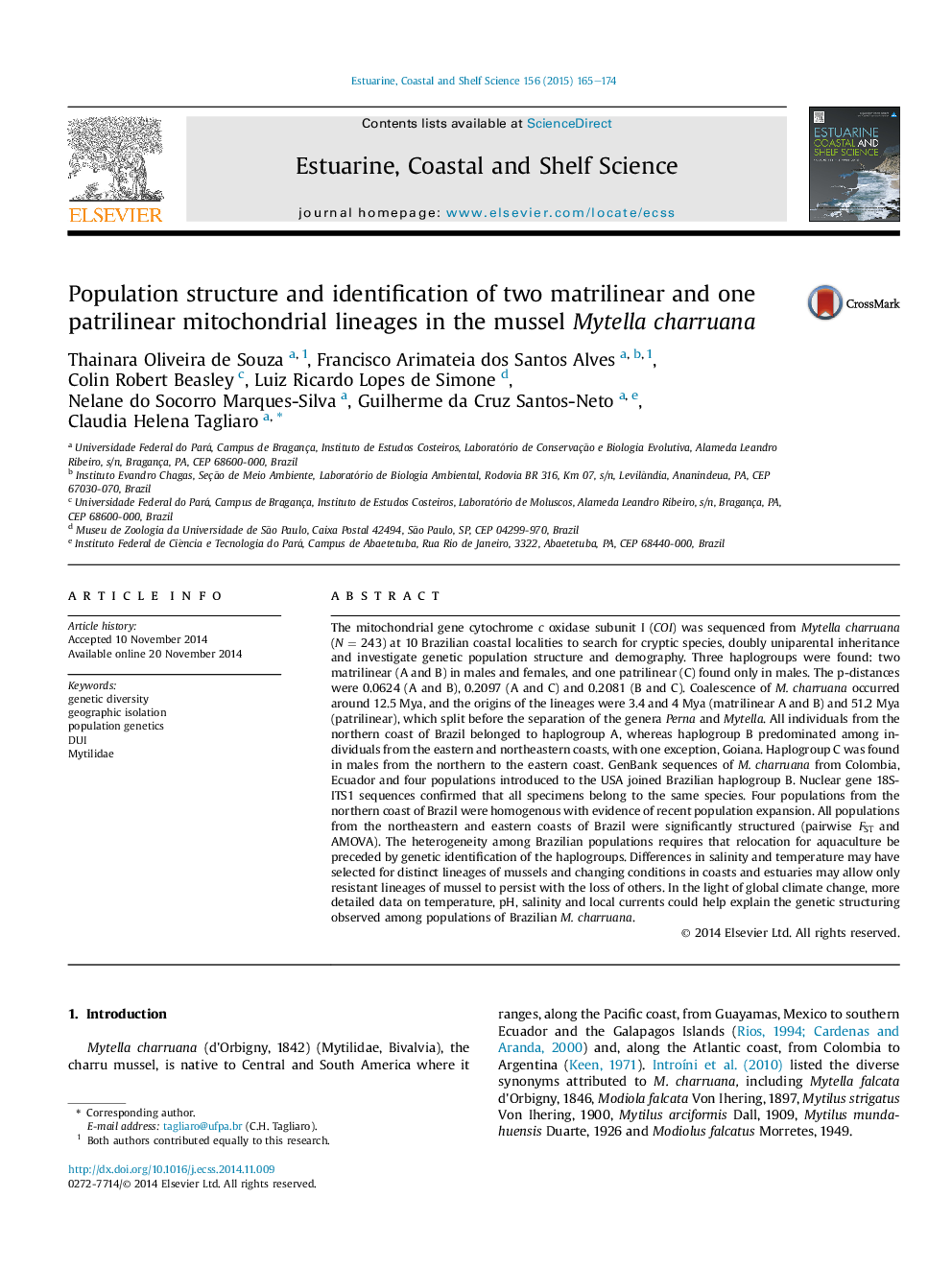| کد مقاله | کد نشریه | سال انتشار | مقاله انگلیسی | نسخه تمام متن |
|---|---|---|---|---|
| 4539578 | 1626640 | 2015 | 10 صفحه PDF | دانلود رایگان |
The mitochondrial gene cytochrome c oxidase subunit I (COI) was sequenced from Mytella charruana (N = 243) at 10 Brazilian coastal localities to search for cryptic species, doubly uniparental inheritance and investigate genetic population structure and demography. Three haplogroups were found: two matrilinear (A and B) in males and females, and one patrilinear (C) found only in males. The p-distances were 0.0624 (A and B), 0.2097 (A and C) and 0.2081 (B and C). Coalescence of M. charruana occurred around 12.5 Mya, and the origins of the lineages were 3.4 and 4 Mya (matrilinear A and B) and 51.2 Mya (patrilinear), which split before the separation of the genera Perna and Mytella. All individuals from the northern coast of Brazil belonged to haplogroup A, whereas haplogroup B predominated among individuals from the eastern and northeastern coasts, with one exception, Goiana. Haplogroup C was found in males from the northern to the eastern coast. GenBank sequences of M. charruana from Colombia, Ecuador and four populations introduced to the USA joined Brazilian haplogroup B. Nuclear gene 18S-ITS1 sequences confirmed that all specimens belong to the same species. Four populations from the northern coast of Brazil were homogenous with evidence of recent population expansion. All populations from the northeastern and eastern coasts of Brazil were significantly structured (pairwise FST and AMOVA). The heterogeneity among Brazilian populations requires that relocation for aquaculture be preceded by genetic identification of the haplogroups. Differences in salinity and temperature may have selected for distinct lineages of mussels and changing conditions in coasts and estuaries may allow only resistant lineages of mussel to persist with the loss of others. In the light of global climate change, more detailed data on temperature, pH, salinity and local currents could help explain the genetic structuring observed among populations of Brazilian M. charruana.
Journal: Estuarine, Coastal and Shelf Science - Volume 156, 5 April 2015, Pages 165–174
